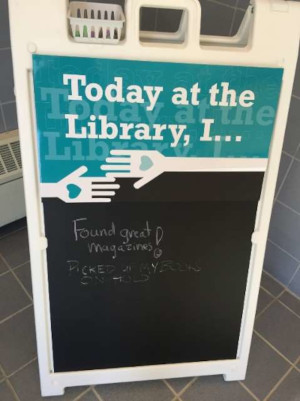You are here
Evaluation & Planning
Outcome
The community can rely on an effective public library that has short and long-term plans and regularly evaluates library operations and services.
Overview
To remain relevant and responsive to the community, public libraries engage in a continuous cycle of planning, operating, evaluating, and reporting on operations and services. This evaluation and planning cycle is used for continuous improvement, long-range strategic planning, and public accountability. Community needs, interests, and aspirations are the catalysts for these efforts with all community sectors engaged.
Library leadership approaches library evaluation by initially identifying areas of strength and capacity. This asset-focused approach is critical to strengthening operations while supporting staff in implementing change. Rigor in evaluation, along with communication with various community stakeholders, instills public trust, maintains transparency, addresses all community groups, and can be a vehicle to justify funding and support.
A longer-term strategic plan envisions the future of the community and library and charts a course to get there. A formal strategic planning process includes input from diverse community members, leaders, and organizations as well as staff, volunteers, and partners to center planning on community impact.
The board of trustees oversees the strategic plan development while the library director and staff implement the plan, track progress, and provide regular reporting to the board and other stakeholders. The strategic plan also enables the library to prioritize the budget, staff activities and performance, library services, and resources.

Evaluation & Planning Essentials
Checklist for All Colorado Public Libraries
- Use the Colorado Public Library Standards to assess strengths and identify areas for growth and improvement. Refer to each standard for additional guidance specific to that standard.
- Establish your library’s unique vision, mission, and values based on the diverse needs, interests, and aspirations of those in the community as well as the singular role of the library within the community served.
- Develop an annual strategic plan for library services and operations that include goals, activities, and measures. Use this plan to inform the annual budget, align with staff performance and evaluation, and prioritize services for all in the community.
- Review library goals and activities regularly to gauge progress, effectiveness, and success. Report regularly to the library board and staff on the progress of the annual plan.
- Develop an annual report of library use and impact to share with community leaders and the public.
- Submit an annual report to the Colorado State Library as required by law (C.R.S. § 24-90-109(2.5)). (See also Administration and Governance Standard).
- Review local, state, and national public library statistics, at least annually, to gain perspective from other libraries and to determine the library’s success in supporting broad community goals.
Evaluation & Planning Essentials +
Checklist for larger libraries
- Develop a community-centered strategic plan to guide budget, resource allocation, library service priorities, and library improvements. Engage stakeholders, including community members and organizations, in the process of developing the library’s strategic plan.
- Implement an ongoing, integrated process of community and library analysis, planning, evaluation, and community impact that covers two to five years, and involves the library board, staff, and community members.
- Identify annual performance outcomes for library services and operations. The goals, objectives, and measures of this annual plan inform the annual budget and align with staff plans and performance.
- The board of trustees identifies and undertakes actions to support the plan.
- Communicate the plan to the community, gaining input along the way as the plan is developed and providing updates as implementation milestones are met.
- Assess current services with qualitative and quantitative measures and user feedback to identify areas for improvement of offerings.
- Employ or contract for data specialists to track, analyze, and report on use data and other evaluation to ensure accountability with your strategic plan.
- Conduct community analysis in alignment with library use, such as market segmentation, GIS mapping of library users, census and demographic data analysis, and other methods to gain understanding of community member interests, needs, library use, and other relevant metrics. Use analysis to predict future trends that can inform planning.
- Develop short and long-term plans for various aspects of library operations, including but not limited to, financial, staffing, facilities, collections, marketing, and technology. See also the specific standard in this document for more detail on each area.


Connect With Us





